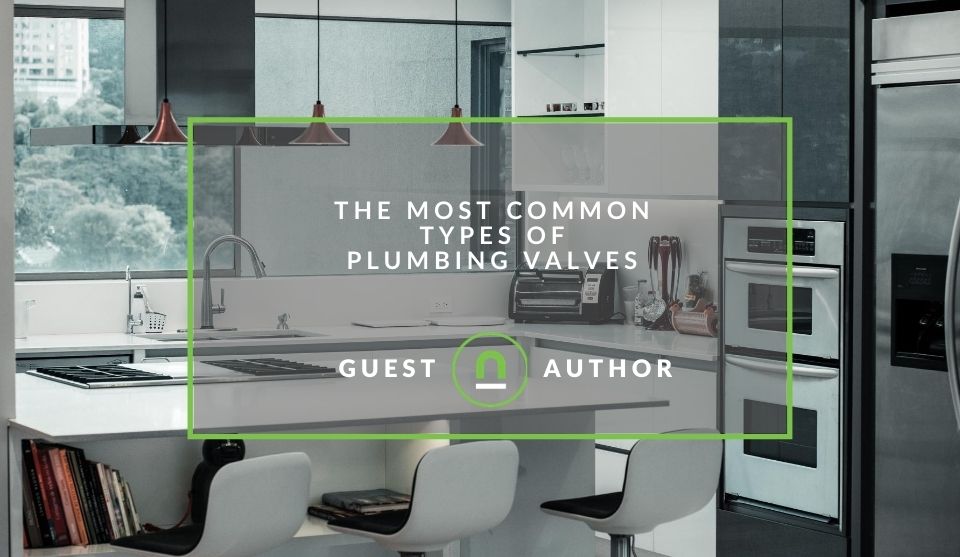Recent posts

Money Talks
Everything You Need to Know About SASSA Status Check
13 April 2025

Mind, Body & Soul
The Genetic Diversity of Cannabis Seeds
12 April 2025

Money Talks
How Small Businesses Can Leverage Blockchain Technology
02 April 2025

Industry Experts
Mastering Personalization in Digital Marketing
31 March 2025
Popular posts
Extravaganza
Trending Music Hashtags To Get Your Posts Noticed
24 August 2018
Geek Chic
How To Fix iPhone/iPad Only Charging In Certain Positions
05 July 2020
Extravaganza
Trending Wedding Hashtags To Get Your Posts Noticed
18 September 2018
Money Talks
How To Find Coupons & Vouchers Online In South Africa
28 March 2019
The Most Common Types Of Plumbing Valves
24 July 2020 | 0 comments | Posted by Luke Fitzpatrick in Constructive Criticism
Valves play an integral part in every plumbing system. Commonly found in households as well as industrial and commercial sites, these deceptively small components serve a crucial function. They support managing the flow of gases and fluids through pipes in addition to on-off control.
You can also use them to prevent backflow, minimize damage from leaks, and disconnect specific sections or fittings for repairs. Not all valves are the same; these components come in a range of designs and materials to support varying purposes. Materials include plastic, brass, cast iron, and stainless steel. In terms of design, the following list covers a few of the most popular options.
1. Ball valves
A ball valve uses a hollow, rotating sphere to allow or block the flow of water. When the lever is in a parallel position relative to the pipe, liquids and gases can pass through. As the handle is turned into a perpendicular position, the sphere is closed, and passage is shut off.
This design is widely used for on-off purposes rather than throttling, and the spherical shape provides a durable, powerful seal, making it suitable for gas applications. One of their biggest advantages is the ability to shut off without pressure drops where necessary quickly. Other pros are reliability, low-maintenance needs, and cost-effectiveness.
2. Gate valves
Gate valves are generally utilised for shut-off applications rather than regulating volume or speed. They have a wedge-shaped door that raises to allow water through and lowers to stop the flow.
A wheel-style handle is turned to lift and drop the barrier, and these offer the benefit of gradual obstruction, and so lowers the risk of the pressure waves associated with water hammer in the pipes.
This variety is best for on-off control as they can be damaged if used to manage volume. Users should expect the operation to be slower with this variety, which can be frustrating in an emergency.
3. Globe valves
Unlike some other types, globe valves are installed for modulating the volume of passage. With this variety, a disc rises from the seat of the valve as the wheel-shaped handle is turned, resulting in a Z-shaped opening to allow liquids and gasses to pass through. From sealed closed to partially opened, these are highly effective for incrementally restricting passage, much like a bathroom or kitchen tap. The ideal application for these is for lower-pressure situations.
4. Butterfly valves
Butterfly valves feature a coin-shaped plate, fixed on a vertical axis, that turns open and shuts to seal the pipe. These are best suited for on-off contexts, rather than modulating speed, which would quickly wear out the plate and eventually compromise the seal itself. This type is more widely utilized in industrial sites than in residential systems. Pros include space efficiency, cost efficiency, and ease of installation and operation.
5. Needle valves
Needle valves are designed to modulate volume and speed to a precise degree. Incorporating a spindle that seals into a seat at the bottom when lowered, this type has a stem-shaped knob. Upon turning the knob, you raise or lower the spindle to open up the narrow passageway.
Reliable and efficient, their biggest advantage is accurate control with minute incremental changes. As such, they’re excellent for conditions requiring exact control, very low rates of passage, or extremely gradual increases or decreases.
6. Pressure Equalising Valve
A pressure-reducing valve helps to reduce overall pressure on both the hot and cold water feeds. By adjusting the spring and diaphragm, you can prevent overpressure, which helps protect individual appliances. In cases such as a shower mixer fitted with a thermostatic cartridge that can be fairly sensitive and prone to damage when there is an imbalance in pressures between the hot and cold water supply.
Summing up
When it comes to finding the right valve, the two key distinctions are shut-off and modulating varieties. With the former, you can rely on the component for on-off requirements. The latter kinds enable you to adjust movement through the pipe system incrementally.
Beyond this distinction, also consider the exact liquids to be handled by the system. This can have implications for the materials your chosen valve should be made from when it comes to longevity and use. Finally, whether it’s an industrial and commercial or residential site, regular checks and maintenance will keep these parts in their best working order for longer.
About the author
Luke Fitzpatrick has been published in Forbes, The Next Web, and Influencive. He is a guest lecturer at the University of Sydney, lecturing in Cross-Cultural Management and the Pre-MBA Program. Connect with him on LinkedIn.
Tell us your story
Would you like to write for nichemarket just like Luke has? Find out how to submit a guest post and when you're ready, you can contact us.
Are you looking to promote your business?
South African construction businesses can create your free business listing on nichemarket. The more information you provide about your business, the easier it will be for your customers to find you online.
Registering with nichemarket is easy; all you will need to do is head over to our sign up form and follow the instructions. If you require a more detailed guide on how to create your profile or your listing, then we highly recommend you check out the following articles.
Recommended reading
If you enjoyed this post and have time to spare why not check out these related posts and dive deeper down the rabbit hole that is plumbing.
- Choosing Between A Plumbing Change or Plumbing Repair
- 4 Tips and Tricks To Clean Your Drains
- The 4 Most Expensive Home Repairs and How to Prevent Them
- 9 Ways to Make Your Bathroom Look Modern
- How To Create The Ideal Kitchen
Tags: Plumbing, Home Repair, Guest Post
You might also like
The Genetic Diversity of Cannabis Seeds
12 April 2025
Posted by Alina Jones in Mind, Body & Soul
A look into the South African heritage of cannabis growing and how the country has taken the plant in terms of growing it into a viable industry & th...
Read moreWhat Are Relational Database Management Systems?
28 March 2025
Posted by Che Kohler in nichemarket Advice
Learn what relational database management systems are, how they organize data using tables and relationships, and why they remain essential for busin...
Read more{{comment.sUserName}}
{{comment.iDayLastEdit}} day ago
{{comment.iDayLastEdit}} days ago
 {{blogcategory.sCategoryName}}
{{blogcategory.sCategoryName}}

